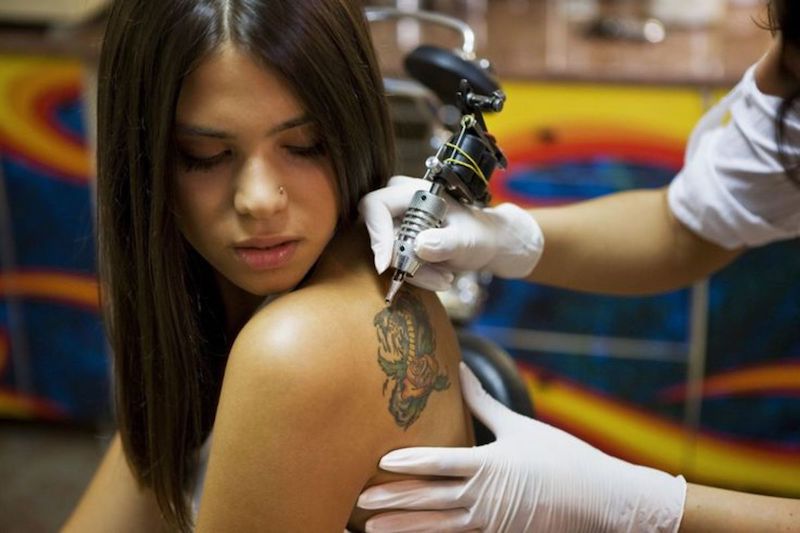Skin Paintings (Tattoos) Can Be Dangerous to Your Health
- Home
- Skin Paintings (Tattoos) Can Be Dangerous to Your Health

Skin Paintings (Tattoos) Can Be Dangerous to Your Health
 Tattooing, a technique of marking the skin with colors, is not new. Some people view tattoos as works of art. Others see them as identifying with a group or as being different.
Tattooing, a technique of marking the skin with colors, is not new. Some people view tattoos as works of art. Others see them as identifying with a group or as being different.
Permanent tattoos are applied with a machine that pierces the skin with needles. Tattooing is illegal in some states and heavily regulated in others, mostly because in the past many tattoo parlors were known to operate without concern for the health and safety of their customers. Today a major health concern of tattooing is the spread of hepatitis B and HIV, the virus that causes AIDS. While there are no documented cases of someone contracting HIV because of getting a tattoo, the threat is still there.
To help prevent the spread of disease, professional organizations for tattoo artists now recommend certain procedures that they say all professional tattooists should follow. Some of these organizations even hold classes for tattooists to teach them cleanliness and sterilization techniques. They say that anyone considering a tattoo should ask the tattooist whether he or she has taken the class and ask to see the certificate of completion.
What Risks Are Involved in Tattooing?
The following are the primary complications that can result from tattooing:
- Infection. Unsterile tattooing equipment and needles can transmit infectious diseases, like hepatitis and skin infections caused by Staphylococcus aureus (“staph”) bacteria*. Tattoos received at facilities not regulated by your state or at facilities that use unsterile equipment (or re-use ink) may prevent you from being accepted as a blood or plasma donor for 12 months.
- Removal problems. Despite advances in laser technology, removing a tattoo is a painstaking process, usually involving several treatments and considerable expense. Complete removal without scarring may be impossible.
- Allergic reactions. Although the FDA has received reports of numerous adverse reactions associated with certain shades of ink in permanent makeup, marketed by a particular manufacturer, reports of allergic reactions to tattoo pigments have been rare. However, when they happen they may be particularly troublesome because the pigments can be hard to remove. Occasionally, people may develop an allergic reaction to tattoos they have had for years.
- Granulomas. These are nodules that may form around material that the body perceives as foreign, like particles of tattoo pigment.
- Keloid formation. If you are prone to developing keloids — scars that grow beyond normal boundaries — you are at risk of keloid formation from a tattoo. Keloids may form any time you injure or traumatize your skin. Micropigmentation: State of the Art, a book was written by Dr. Charles Zwerling, Annette Walker and Dr. Norman Goldstein, states that keloids occur more frequently as a consequence of tattoo removal.
- MRI complications. There have been reports of people with tattoos or permanent makeup who experienced swelling or burning in the affected areas when they underwent magnetic resonance imaging or MRI. This seems to occur only rarely and apparently without lasting effects.
How Do I Get Rid of a Tattoo?
Dermabrasion is another method for tattoo removal. It’s like “sanding” the layer of skin that has the ink. Tattoos can also be removed by cutting away the skin that has the tattoo. The remaining skin is then stitched together.
- Share
Classic Ghana
Classic Ghana brings you into a fun world of arts, entertainment, fashion, beauty, photography, culture and all things in between. Let’s explore these together!







